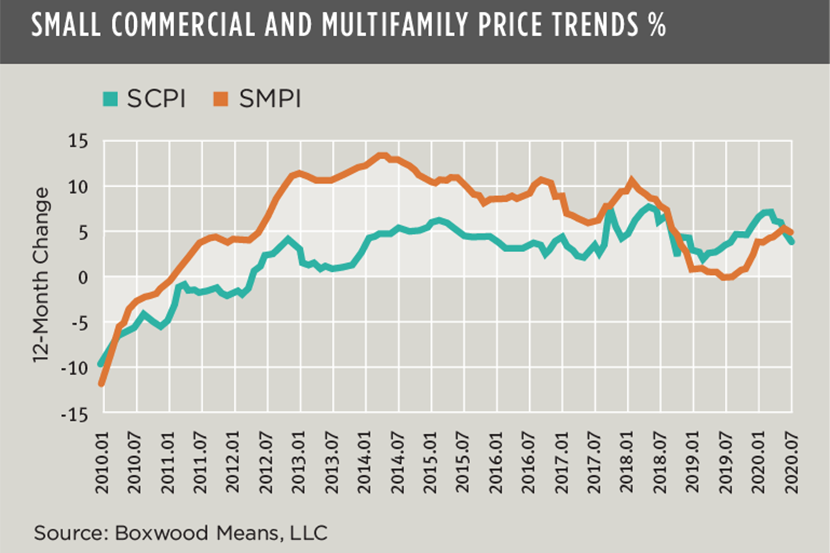
Small-Cap Multifamily Shows Resilience

Small-cap multifamily properties are proving resilient during the pandemic-induced recession, said Boxwood Means, Stamford, Conn.
“Occupancies have remained strong and investors appear to be looking past increased trends in payment interruptions and the specter of possible tenant evictions,” said Boxwood Means Principal Randy Fuchs. “As a result, small-cap multifamily prices have outperformed small commercial asset prices.”
Boxwood’s national Small Multifamily Price Index reported small (under $5 million) multifamily property prices rose 0.2 percent during July, which raised the year-to-date performance to 2.6 percent. The report noted the Index’s 12-month return accelerated to 5 percent during the latest period, extended the streak of annual increases of 5 percent or better over three consecutive months.
Despite this solid price performance, recent data suggest the ongoing recession could create some further volatility ahead in terms of rental payments, Boxwood Means said. RealPage, Richardson, Texas, said monthly payments from renters equaled 92.5 percent for living in Class A apartments and equaled 94 percent for people in Class B apartments in July. But only 88.2 percent of tenants residing in Class C properties remitted monthly payments.
Meanwhile, the recent softness of small-cap commercial prices continued into July with a second consecutive 0.2 percent loss according to Boxwood’s national Small Commercial Price Index. The index has managed a 0.9 percent gain year-to-date because of a strong start to 2020, but the 3.8 percent increase over the past 12 months has declined for five months and is the lowest annual return since July 2019.
“We expect that space market fundamentals during the third quarter will be as weak as or worse than the second-quarter results, thereby further deterring investors from bidding up asset prices,” Fuchs said, noting July’s preliminary $12 billion in small-cap commercial sales was off 35 percent year-over-year and the $93 billion total year-to-date represented a 27 percent decline compared to 2019.
